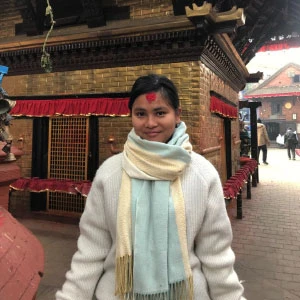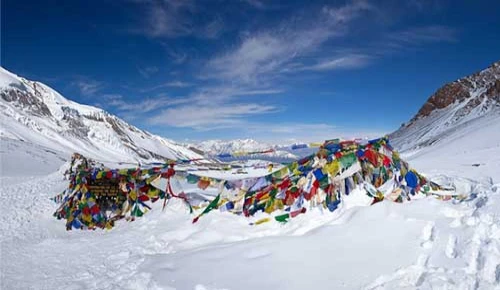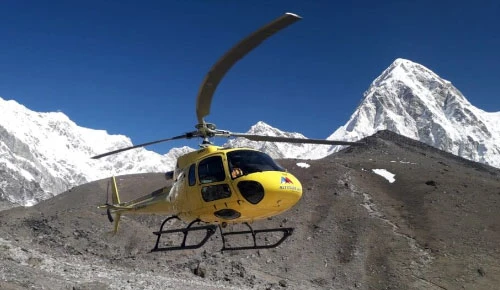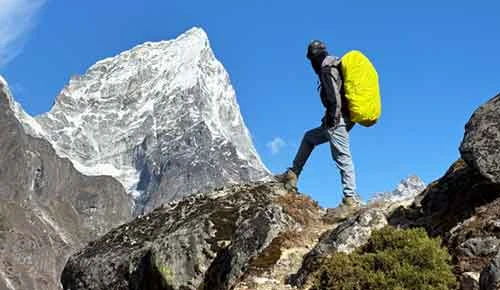Tiji Festival in Upper Mustang: Dates, Traditions, and Attractions
Where the Himalayas are singing the old tales, and the mountains keep the old tales, Lo Manthang comes one year in a fire of color and sound and of devotion. Tiji, a festival celebrating the victory of good over evil, invites everyone who observes it into a world where spirituality and culture dance together.
The Tiji Festival in Upper Mustang is an experience of its own for travelers who want to experience something special and new. Hidden within the Tibetan walls of the city called Lo Manthang, the festival is not only a celebratory event but also a living, breathing piece of Tibetan Buddhist practices, dancing, and local culture that have been maintained over hundreds of years.
Table of Contents
The Legend Behind Tiji: Dorje Jono’s Triumph
The Tiji Festival is deeply rooted in the mythology and spiritual beliefs of Mustang. According to ancient legends, a powerful demon named Dorje Jono once brought misery, drought, and chaos to the land, leaving the people of Mustang in despair. To restore peace and harmony, a divine figure—often associated with Dorje Jono himself in a transformative role—fought a great battle to defeat the forces of evil and ensure the survival of life in the region.
This victory of good over evil lies at the heart of the Tiji Festival. The three-day celebration symbolizes spiritual cleansing, renewal, and the promise of prosperity for the entire community.
But Tiji is more than just a retelling of myth. It serves as a living representation of Tibetan Buddhism, where the masked dances of monks, the ritual chants, and the sacred ceremonies embody deeper spiritual truths. Each movement, costume, and prayer performed during the festival reflects the cosmic balance and the timeless belief in compassion, harmony, and enlightenment.
Historical Ties Between Lo Manthang, Tibetan Buddhism, and the Tiji Festival
The Tiji Festival cannot be understood without exploring the profound historical and spiritual connection between Lo Manthang, Tibetan Buddhism, and the centuries-old traditions of Mustang. Lo Manthang, the walled capital of the former Kingdom of Mustang, was founded in the 14th century by King Ame Pal. From its inception, the region embraced Tibetan culture and religion, becoming a spiritual hub that preserved the teachings of Tibetan Buddhism even during times of political and cultural change across the Himalayas.
Mustang’s close geographical and cultural ties with Tibet shaped every aspect of life in Lo Manthang—from art and architecture to language, rituals, and festivals. The Sakya sect of Tibetan Buddhism, which had a strong presence in the region, played a pivotal role in introducing religious ceremonies like Tiji. The monks of the Chhode Monastery (also known as Choede Gompa), founded in the 15th century, have been the principal guardians of this festival for generations. Their sacred dances, prayers, and rituals not only depict the story of Dorje Jono’s triumph over evil but also carry forward the spiritual legacy of Mustang’s Buddhist heritage.
Over the centuries, Tiji evolved into more than a religious ritual—it became a symbol of unity, identity, and resilience for the people of Mustang. Even during periods when Mustang was politically isolated, the festival remained a vibrant celebration of faith, culture, and tradition, ensuring that the spiritual heartbeat of Lo Manthang never faded.
Today, the Tiji Festival stands as a living testament to the region’s Buddhist roots, drawing pilgrims, monks, and travelers from around the world who come to witness its ancient rituals performed against the backdrop of Lo Manthang’s medieval walls and Himalayan grandeur.
Cultural Highlights of Tiji Festival
- Colorful masks symbolizing gods, demons, and spiritual beings
- Intricate costumes representing Tibetan Buddhist traditions
- Hypnotic music with horns, drums, and cymbals echoing across Lo Manthang
- Full community involvement in rituals, dances, and celebrations
- Dances, chants, and offerings reflecting Buddhist values of compassion and balance
- Sacred thangka paintings displayed during the festival for blessings
- Spiritual blessings offered by monks for peace and prosperity
- Traditional Tibetan dance forms passed down through generations
- Authentic Mustang cuisine enjoyed by locals and visitors
- Festival atmosphere with vibrant decorations and prayer flags across the walled city.
The Festival Calendar: Dates, Duration, and Daily Events
The Tiji Festival is a three-day celebration in Lo Manthang, Upper Mustang, marked by elaborate rituals, sacred dances, and prayers led by the monks of Chhode Monastery. Each day carries its own spiritual symbolism and meaning.
Day 1: Opening Ceremony and Purification Rituals
The festival begins with a series of sacred prayers and purification ceremonies conducted by the monks inside the monastery. These rituals aim to cleanse the environment and the souls of the people, preparing everyone for the spiritual journey ahead.
Later in the day, monks wearing vibrant costumes and masks perform the first series of ritual dances, known as Tsa Chham. These dances depict the mythological story of Dorje Jono and set the tone for the upcoming battle between good and evil. The chants and music played on traditional Tibetan instruments fill the air, creating an atmosphere of reverence and anticipation.
Day 2: The Battle Between Good and Evil
The second day marks the dramatic representation of the conflict between Dorje Jono, the divine figure, and the demon responsible for bringing chaos and drought to the land. The monks perform elaborate masked dances, symbolizing the cosmic struggle to drive away evil forces.
Offerings are made to local deities, and prayers are chanted to banish misfortune, suffering, and negative energies from the entire region. This day is visually striking, with performers wearing brightly colored costumes, ornate masks, and traditional ornaments, making it one of the most captivating parts of the festival for both locals and visitors.
Day 3: Victory, Renewal, and Blessings
The final day celebrates Dorje Jono’s victory over the demon and the restoration of harmony in Mustang. The monks perform dances that symbolize the triumph of good over evil and the cleansing of all obstacles from the community’s path.
A key highlight is the burning of effigies representing evil spirits, marking the end of suffering and the beginning of renewal and prosperity. The monks then offer blessings to the locals and visitors, praying for peace, fertility, and spiritual well-being for the coming year. The conclusion of the festival leaves Lo Manthang filled with joy, faith, and optimism.
Sacred Dances and Ritual Performances
One of the most captivating elements of the Tiji Festival is the series of sacred dances and ritual performances that unfold across the three days of celebration. These dances are not just artistic expressions but carry deep spiritual symbolism rooted in centuries-old Tibetan Buddhist traditions. Performed by the monks of Chhode Monastery in Lo Manthang, every movement, chant, and costume in the dance conveys a message of peace, protection, and purification.
Symbolism Behind the Dances
The dances, known as “Tsa Chham” and “Nga Chham,” reenact the legendary battle between Dorje Jono and the demon of chaos and drought. Through intricate steps, gestures, and rhythms, the monks dramatize the story of the demon’s defeat and the restoration of harmony to the land.
- First Day: The rituals begin with the preparation phase, invoking deities for protection and blessings.
- Second Day: The battle between good and evil is portrayed through energetic dances and chants, drawing locals and visitors into the spiritual drama.
- Final Day: The ritual concludes with the symbolic destruction of evil, ensuring peace and prosperity for the community.
Costumes and Masks: The Spiritual Armor
The monks wear elaborate costumes and vividly painted masks representing various deities, demons, and spiritual forces. The bright colors—red, yellow, blue, and white—symbolize cosmic elements and spiritual energies. Each mask has a specific role: some embody protective deities, while others depict the demonic forces being subdued. The ornate robes, prayer beads, and traditional ornaments further enhance the spiritual aura of the performance.
Music and Chants: The Rhythm of Rituals
Accompanying the dances is a mesmerizing ensemble of traditional Tibetan instruments such as long horns (Dungchen), drums (Nga), and cymbals (Silnyen). Deep chants and prayers resonate across the courtyard, creating a powerful spiritual atmosphere that blends sound, movement, and devotion into one sacred experience.
Spiritual Purpose of the Rituals
Beyond entertainment, these dances are acts of meditation, purification, and blessings. For the monks, performing the rituals is a form of spiritual offering to deities, while for the spectators, it serves as a moment of reflection and renewal, reinforcing the festival’s central theme—the victory of good over evil and the restoration of balance in the universe.
Attraction for Travelers
To the traveller, Tiji will provide a unique cultural experience that is difficult to find in other places:
- Witness centuries-old Tibetan Buddhism rituals performed exactly as they have been for generations in Upper Mustang.
- Be mesmerized by vibrant mask dances, accompanied by traditional chants, music, and symbolic movements that narrate the story of good triumphing over evil.
- Capture breathtaking photographs of the walled city of Lo Manthang framed by the dramatic Himalayan peaks.
- Interact with friendly locals, learn about their customs, and gain insight into a culture preserved through centuries of isolation.
- Explore local markets and traditional handicrafts, including handmade woolen textiles, jewelry, and prayer flags.
- Experience a journey into the spiritual and cultural heart of Mustang, offering reflection, learning, and a sense of connection to the Himalayan way of life.
- Feel the collective energy and optimism of the community as villagers and monks celebrate together, making it an unforgettable experience.
- Attend a rare festival that happens only once a year, offering the unique chance to witness rituals and performances few outsiders ever see.
- Experience an unforgettable blend of culture, spirituality, and adventure in one of Nepal’s most remote and enchanting regions
Conservation and Sustainable Tourism
As much as the people of Mustang, along with the royal family of Lo Manthang, are striving to maintain the genuine nature of the Tiji Festival, increasing the number of tourists is generating pressure on them. Still, monks and craftsmen are busy producing elaborate masks, elaborate costumes and ritual objects through the old methods that have been passed down through the generations. It is an active festival in which the local communities are involved in all the levels of the festival, making sure that their centuries-old traditions have not been wiped out. But modernization and tourism are also associated with some challenges, including the threat of commercialization and loss of spiritual value. In response, there are serious regulations on how the visitors can visit, and education focuses on the observance of the local culture and rituals. Nevertheless, even in the face of these pressures, Tiji is an existing cultural treasure, striking the right balance between the demands of the contemporary tourist and the demands of the spiritual and artistic heritage of Mustang. The festival still evokes in awe a connection between the past and the present in a special Himalayan culture.
Conclusion
The Tiji Festival in Lo Manthang is not only a festival; it is also a spiritual journey, a masterpiece of culture, and time travel. As a tourist, one can watch how good should prevail over evil, experience the Tibetan Buddhist culture, and get immersed in the mystique of the Upper Mustang. Be it a cultural enthusiast, spiritual seeker, or adventure traveller, attending the Tiji Festival is an opportunity to be experienced only once in a lifetime—an opportunity to explore a place where tradition, devotion and Himalayan beauty meet.
Join Nepal Trek Adventure to experience the magic of the Tiji Festival! Enter the colourful world of Lo Manthang and celebrate the victory of good over evil with the help of centuries-old rituals, mask dances and Himalayan spirituality. Allow our professional guides to push you safely through this once-in-a-lifetime trip between Jomsom and the center of Mustang as you take in culture, history, and unbelievable landscapes.
Don’t miss your Tiji Festival experience; book Upper Mustang Tiji Festival Jeep Tour today and create lifetime memories!







